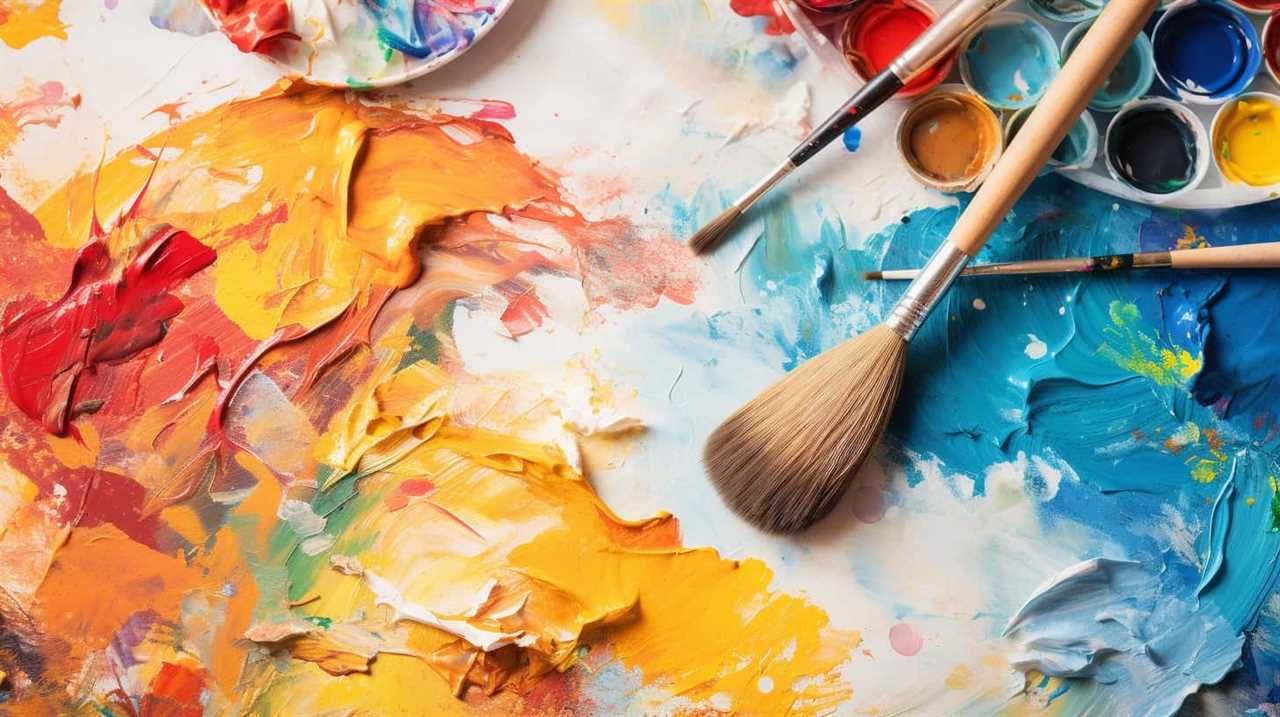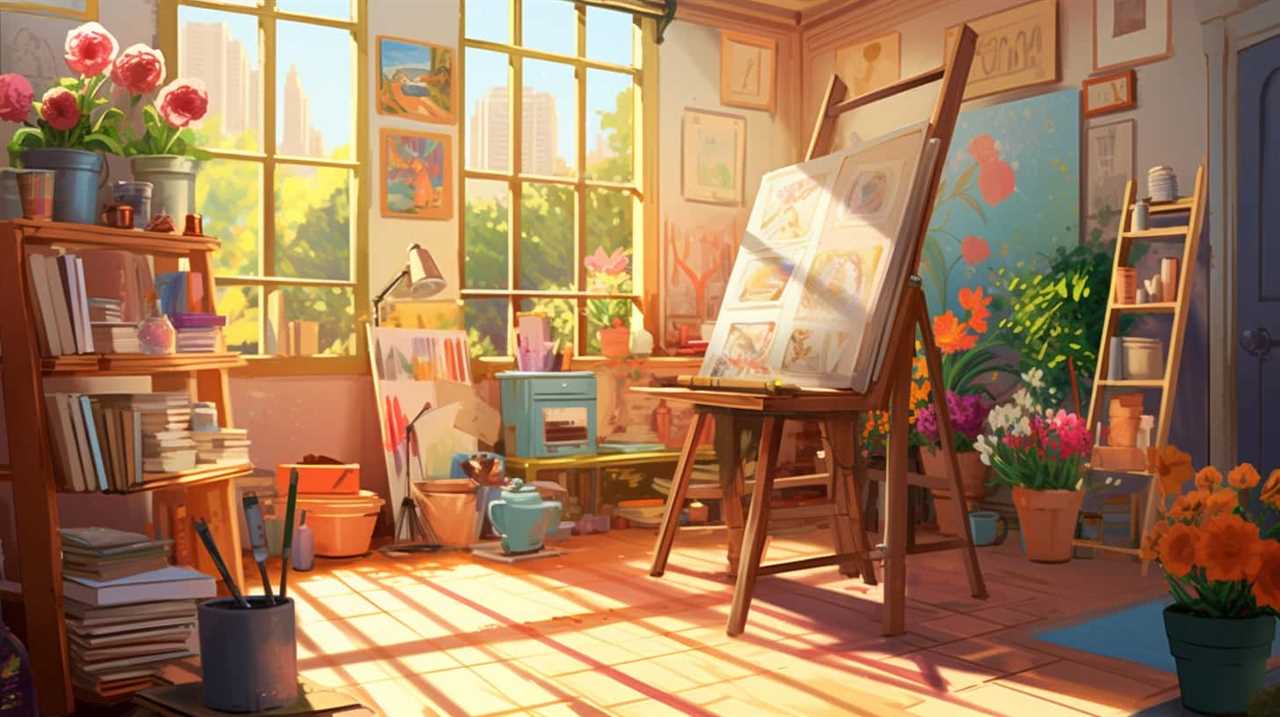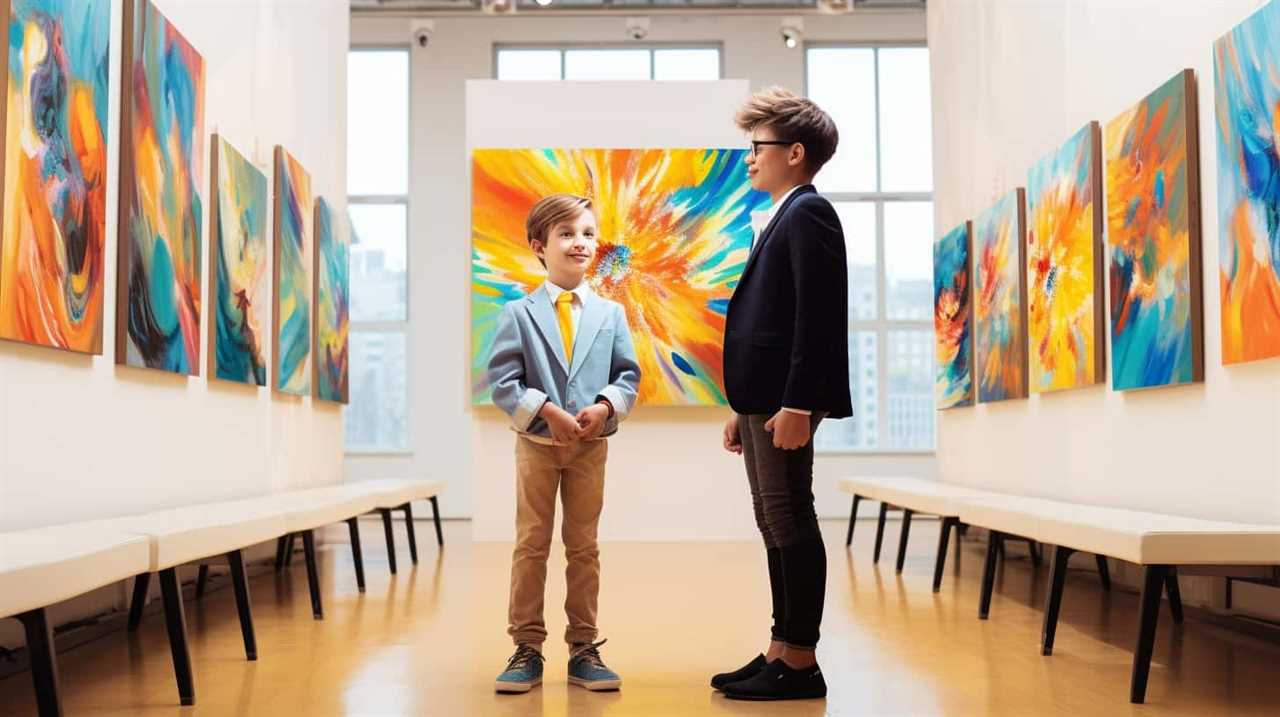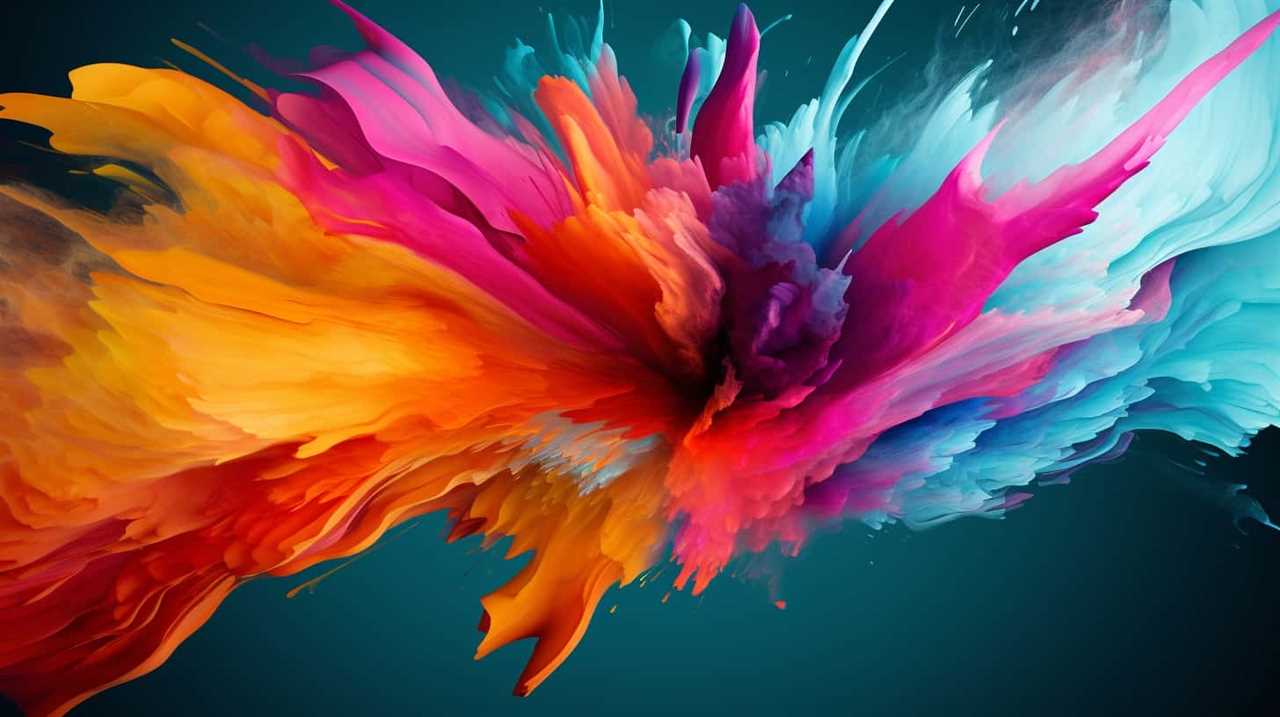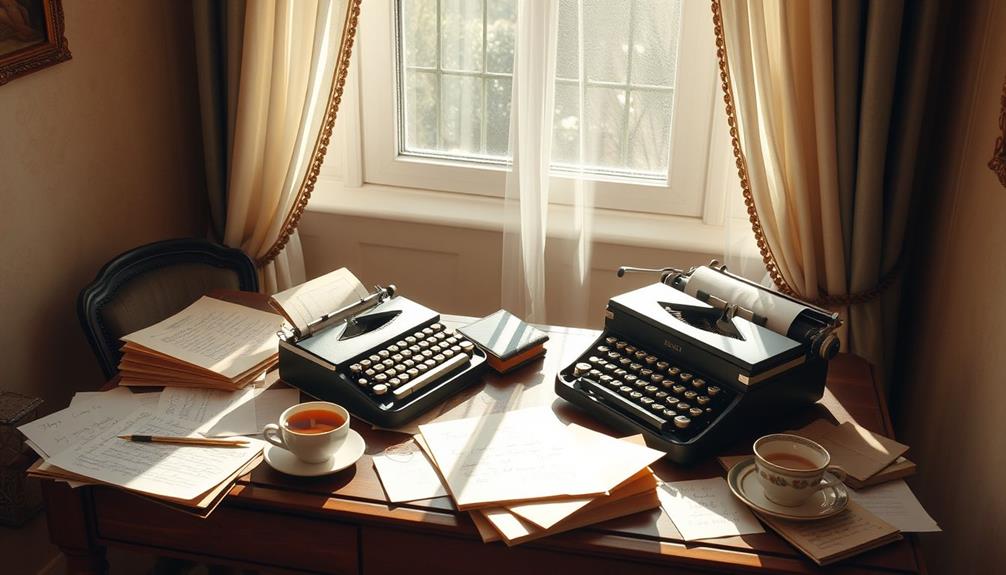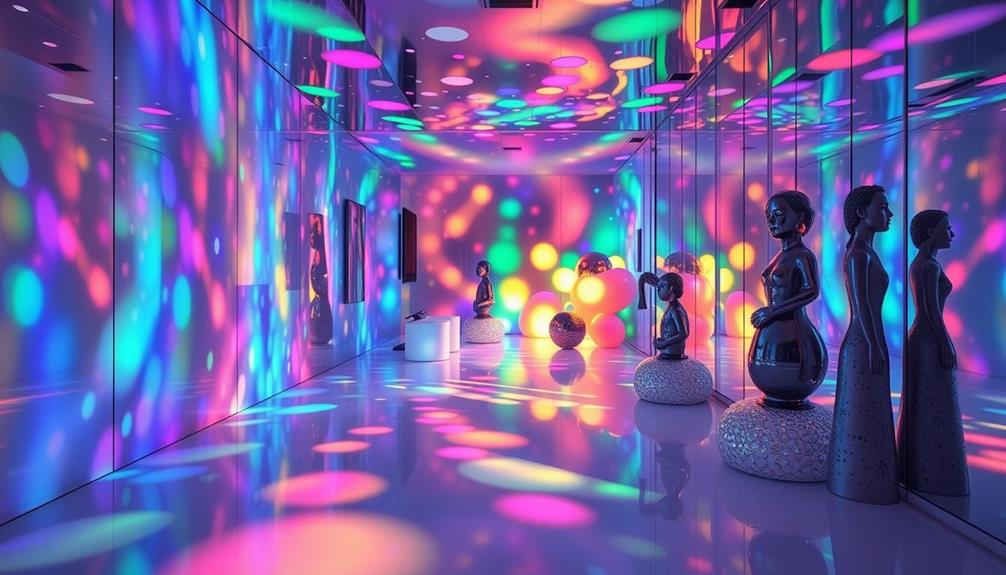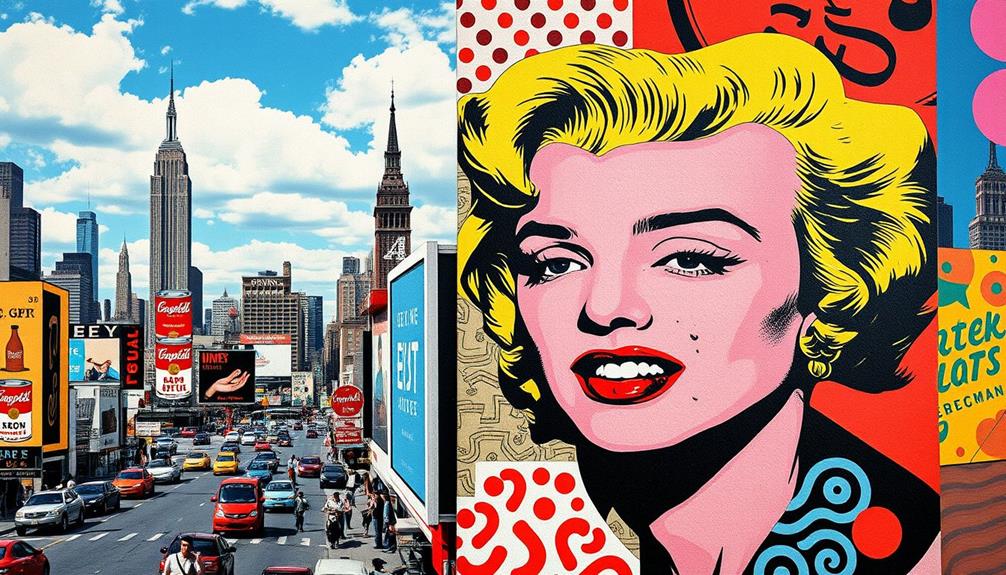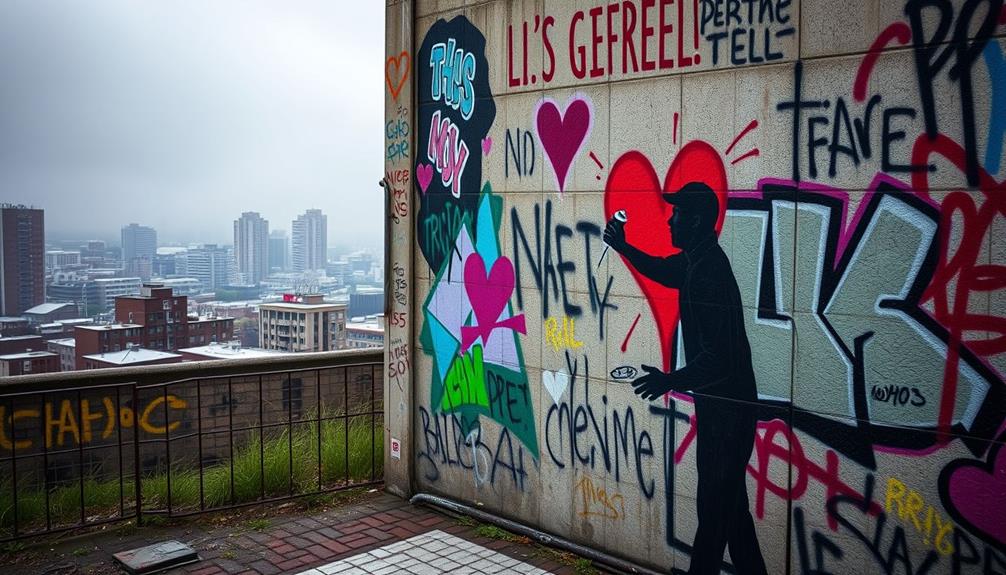As art critics, we reveal the hidden symbols embedded in society’s fabric, unveiling untold narratives and questioning the status quo. Our voices resonate with a longing for freedom, aiming to break free from the constraints of old-fashioned traditions.
Through the active exploration of art, we dissect the intricate layers of social commentary, unearthing the power it possesses in shaping public opinion and cultural critique. The intersection of politics and art becomes our playground, where we confront social injustices and challenge the norms that confine us.
Through artistic expression, we provoke thought and ignite change, influencing the collective consciousness of society. Join us on this journey as we delve into the evolution of art criticism, unraveling the profound impact it has on our world.
Key Takeaways
- Artistic interpretations reflect and comment on the world around us, providing insight into social, political, and cultural forces.
- Art challenges perspectives, sparks conversations, and brings attention to important topics that often go unnoticed.
- Art shapes beliefs, values, and perspectives, shaping public opinion and challenging the way we think.
- Art acts as a catalyst for societal change, provoking thought, dismantling oppressive systems, and exposing hidden power structures.
Art as a Mirror of Society
In our exploration of art as a mirror of society, we find that critics often examine the ways in which artistic expressions reflect and comment on the world around us. Artistic interpretations serve as a lens through which we can understand and analyze societal reflections. Through their work, artists have the power to capture the essence of their time, offering us glimpses into the hopes, fears, and struggles of a particular era.
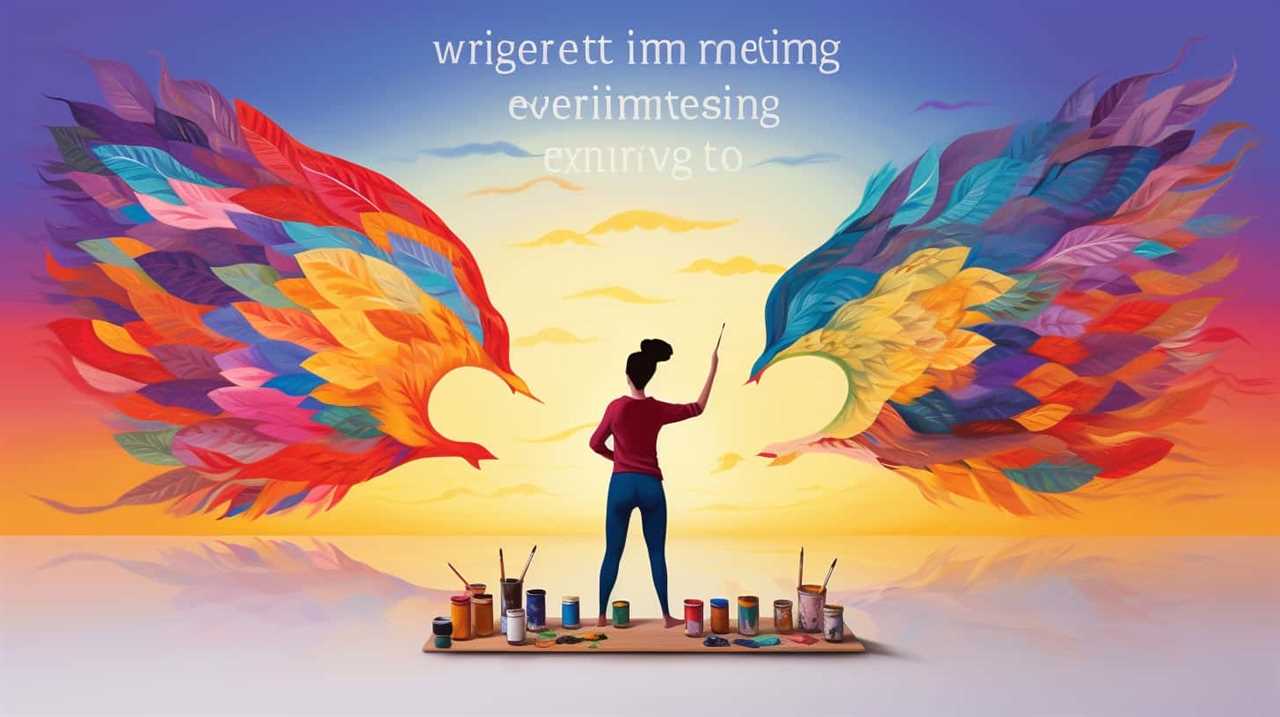
Artistic interpretations can take many forms, from paintings and sculptures to literature and music. Each medium offers a unique perspective on the society in which it’s created. For example, the paintings of the Renaissance period often depicted religious scenes, reflecting the prominence of the Church in society. Similarly, the writings of authors like George Orwell or Aldous Huxley provide scathing critiques of totalitarian regimes, offering a commentary on the political climate of their time.
By examining artistic interpretations, we can gain a deeper understanding of the social, political, and cultural forces at play in a particular era. These works serve as a testament to the power of art to not only reflect society but also to challenge and shape it.
In the subsequent section, we’ll explore the role of art criticism in providing social commentary and the impact it can have on society.
Art Criticism and Social Commentary
When it comes to art criticism and social commentary, one can’t underestimate the impact that art has on society.
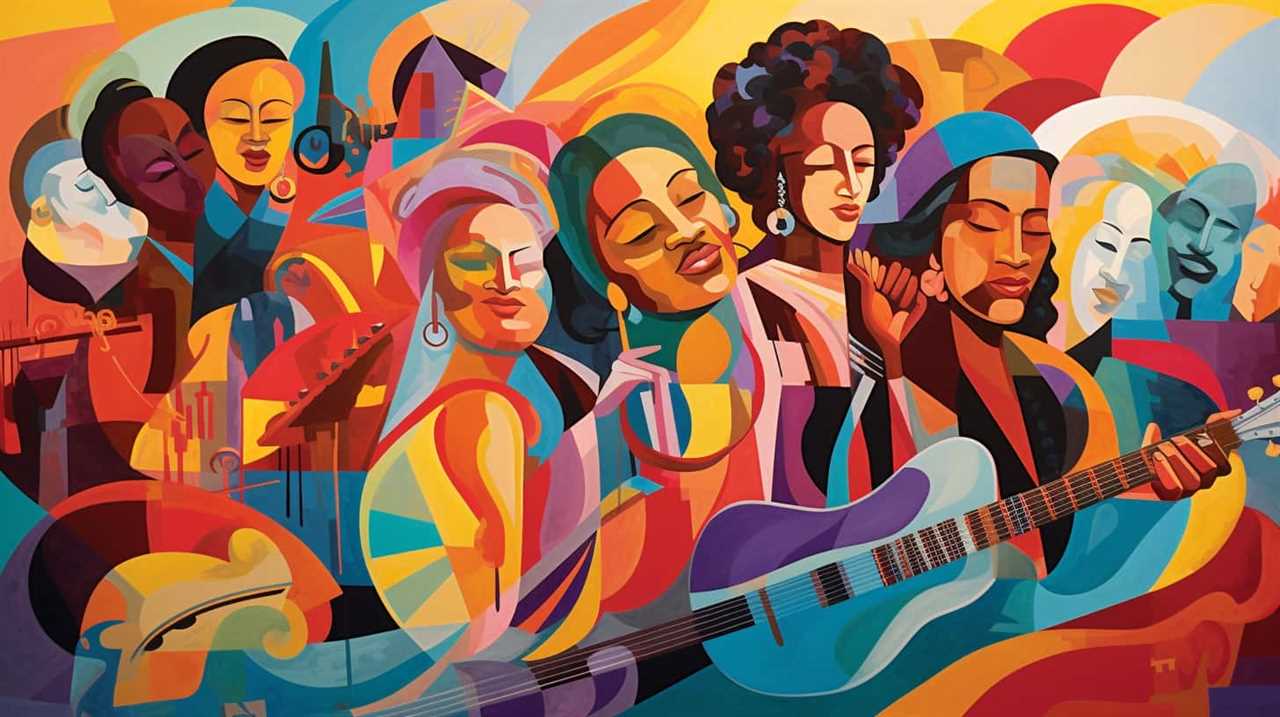
Through various forms of artistic expression, artists have the power to reflect and comment on cultural, political, and social issues. Whether it’s a thought-provoking painting, a provocative sculpture, or a poignant photograph, art has the ability to challenge our perspectives, spark conversations, and bring attention to important topics that often go unnoticed.
Impact of Art
Art critics offer insightful perspectives on the impact of art, highlighting its ability to provide social commentary and provoke thought. Through their analysis, they shed light on the profound influence art has on society and its power to shape collective consciousness. Artistic expression serves as a mirror, reflecting the issues and concerns of the time, while also challenging societal norms and beliefs. It serves as a catalyst for conversation, pushing individuals to question the status quo and consider alternative perspectives. This is evident in the works of artists such as Banksy, whose thought-provoking street art addresses social and political issues. Furthermore, art criticism plays a crucial role in guiding viewers to interpret and understand the underlying messages and symbolism embedded within artworks. By examining the impact of art, critics empower individuals to engage critically with the world around them, fostering a sense of liberation and facilitating societal change.
| Artistic expression | Impact on society | |
|---|---|---|
| Definition | A form of | Art influences society in various |
| communication | ways, shaping beliefs, values, and | |
| through creative | perspectives. It has the power to | |
| outlets, allowing | challenge social norms, provoke | |
| individuals to | thought, and stimulate dialogue | |
| express | about important issues. | |
| Example | Banksy’s street art | Banksy’s art has sparked |
| conversations about politics, | ||
| capitalism, and social justice. |
Cultural Reflections Through Art
Art critics engage in thoughtful analysis and provide valuable insights on the ways art reflects and comments on cultural values and social issues.
Cultural diversity plays a significant role in shaping artistic interpretation, as artists often draw inspiration from their surroundings and experiences. Through their work, artists can depict the complexities and nuances of different cultures, shedding light on societal norms, traditions, and struggles.
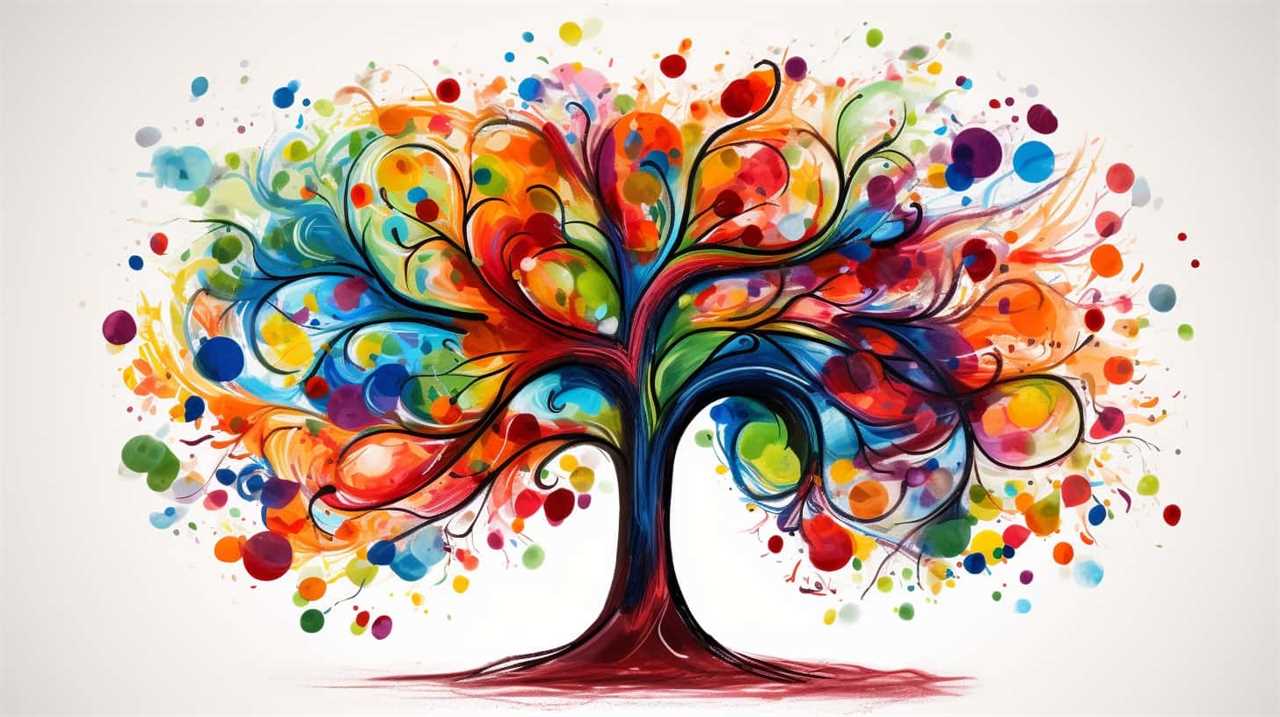
Artistic interpretation allows for a deeper understanding of cultural diversity, encouraging viewers to question their own perspectives and biases. By exploring various artistic styles and themes, art critics help us recognize the power of art as a tool for social commentary.
They highlight the importance of cultural reflection through art, urging us to appreciate and celebrate the richness and uniqueness of different cultures. Through their insightful analysis, art critics contribute to a more inclusive and progressive society.
The Power of Art in Cultural Critique
Art has long been recognized as a powerful tool for cultural critique. Through their work, artists have the ability to challenge societal norms, provoke thought, and inspire change.
Art as Social Commentary
As art critics, we believe that the role of artistic expression in society’s canvas goes beyond mere aesthetics, and it’s through the use of visual language that we, as individuals, can collectively reflect and critique our cultural landscape.
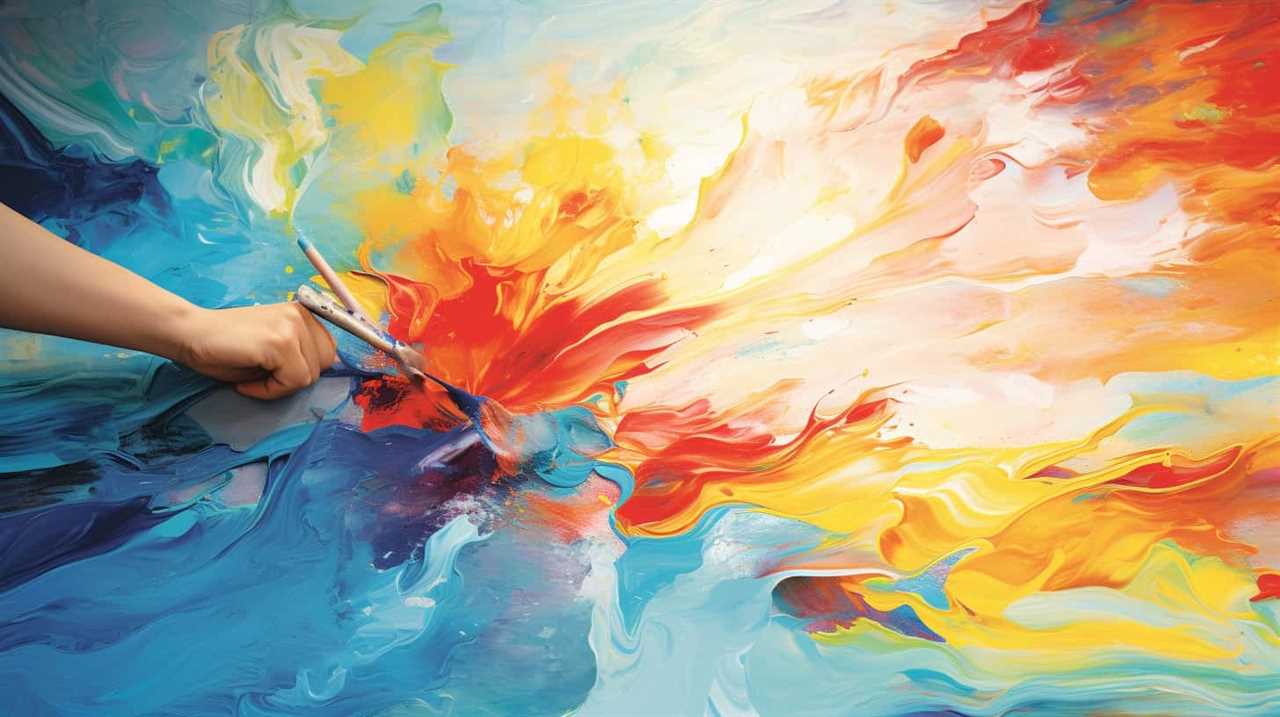
Art has long been used as a powerful tool for social commentary, serving as a platform for activism and protest. Artists have the unique ability to capture the essence of societal issues and spark conversations that lead to change. Through their work, they challenge the status quo, question authority, and shed light on the injustices that often go unnoticed.
Art as social commentary has the power to disrupt dominant narratives, challenge oppressive systems, and inspire collective action. By presenting alternative perspectives and highlighting marginalized voices, artists contribute to the ongoing struggle for liberation and social transformation.
Challenging Societal Norms
By challenging societal norms, art critics assert the power of art in cultural critique. Art has always played a significant role in challenging conventions and pushing boundaries, acting as a catalyst for societal change. Through artistic resistance, artists challenge the status quo and provoke thought, encouraging viewers to question their own beliefs and assumptions.
Artistic expressions that challenge societal norms often aim to dismantle oppressive systems, challenge stereotypes, and expose hidden power structures. These works can range from provocative installations that challenge gender norms to politically charged street art that challenges the government’s actions.
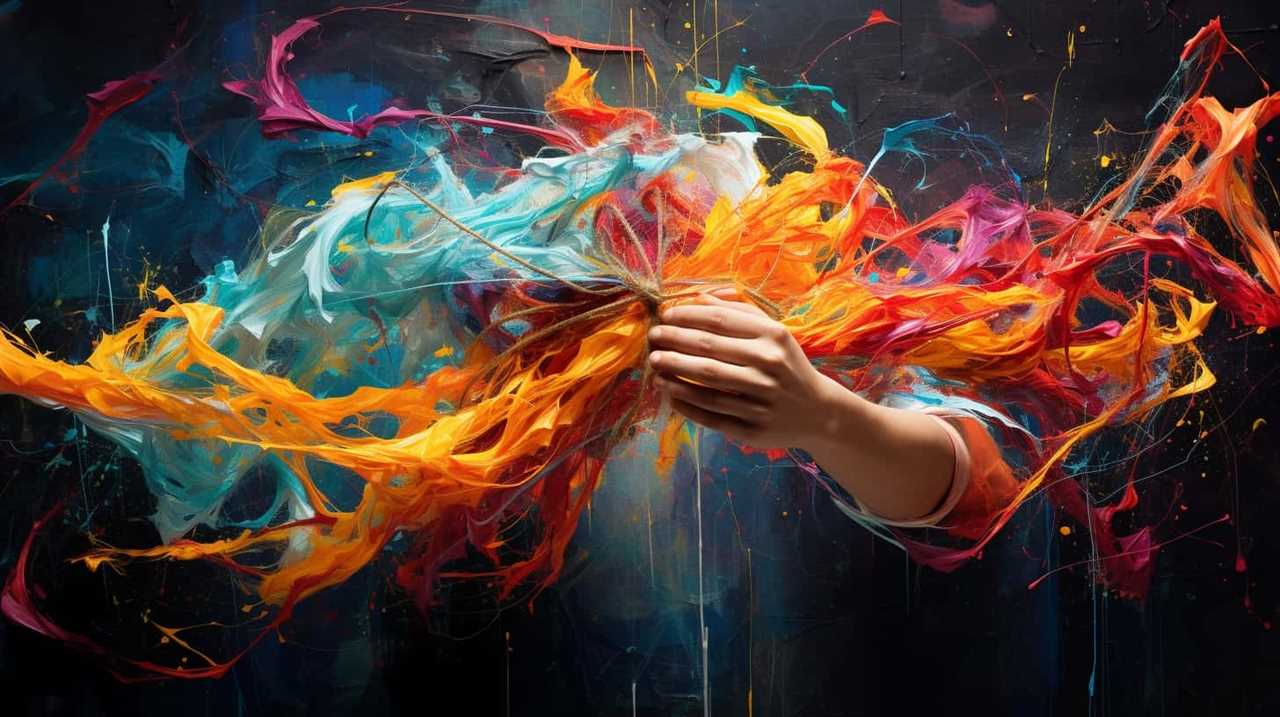
Influence on Cultural Change
Through pushing boundaries and challenging conventions, art critics affirm the transformative power of artistic expression in shaping cultural change.
Art has always had the ability to influence cultural values and challenge societal norms. Artists have the unique ability to reflect the world around them and offer alternative perspectives that can challenge the status quo.
By pushing boundaries and breaking down barriers, art can create new conversations and challenge existing power structures. It can question dominant narratives and offer a fresh perspective on social issues.
Art’s impact on societal norms is undeniable, as it has the power to shape public opinion and challenge the way we think about the world.

As we delve deeper into exploring art’s role in shaping public opinion, we can see how art can be a powerful tool for social change.
Art’s Role in Shaping Public Opinion
Art plays a crucial role in shaping public opinion. It’s a powerful tool that has the ability to influence the way we perceive the world around us and can be used as a catalyst for social change. Here are four ways in which art impacts public perception and serves as a tool for social change:
- Art challenges the status quo: Through visual representations, art can challenge existing norms and ideologies, prompting individuals to question their beliefs and consider alternative perspectives. By presenting different narratives and challenging societal constructs, art has the power to broaden our understanding of complex issues.
- Art amplifies marginalized voices: Art has the ability to give a voice to those who are often silenced or marginalized in society. Artists can use their work to shed light on social injustices, inequality, and discrimination, bringing attention to issues that may have been overlooked by mainstream media.
- Art creates empathy and connection: Art has the unique ability to evoke emotions and create a sense of empathy in viewers. By portraying the human experience in a relatable and heartfelt manner, art can bridge the gap between different communities and foster understanding and compassion.
- Art sparks dialogue and activism: Art has the power to start conversations and ignite social movements. Whether through provocative exhibitions, street art, or performance art, artists can inspire individuals to take action and advocate for change.
The Intersection of Politics and Art
We explore how politics and art intersect, shaping our understanding of society’s canvas. Politics in art refers to the incorporation of political themes, ideas, and messages in artistic expressions. Artists have long used their creative endeavors as a platform to engage with socio-political issues, challenging the status quo and advocating for change. This form of artistic activism allows artists to not only express their opinions but also to influence public opinion and provoke conversations around important political topics.
Artistic activism takes many forms, ranging from visual arts like paintings and sculptures to performance art, music, and literature. It serves as a powerful tool for artists to critique political systems, highlight social injustices, and promote freedom and equality. By blending political messages with aesthetic elements, artists can reach a broader audience, transcending the boundaries of traditional political discourse.
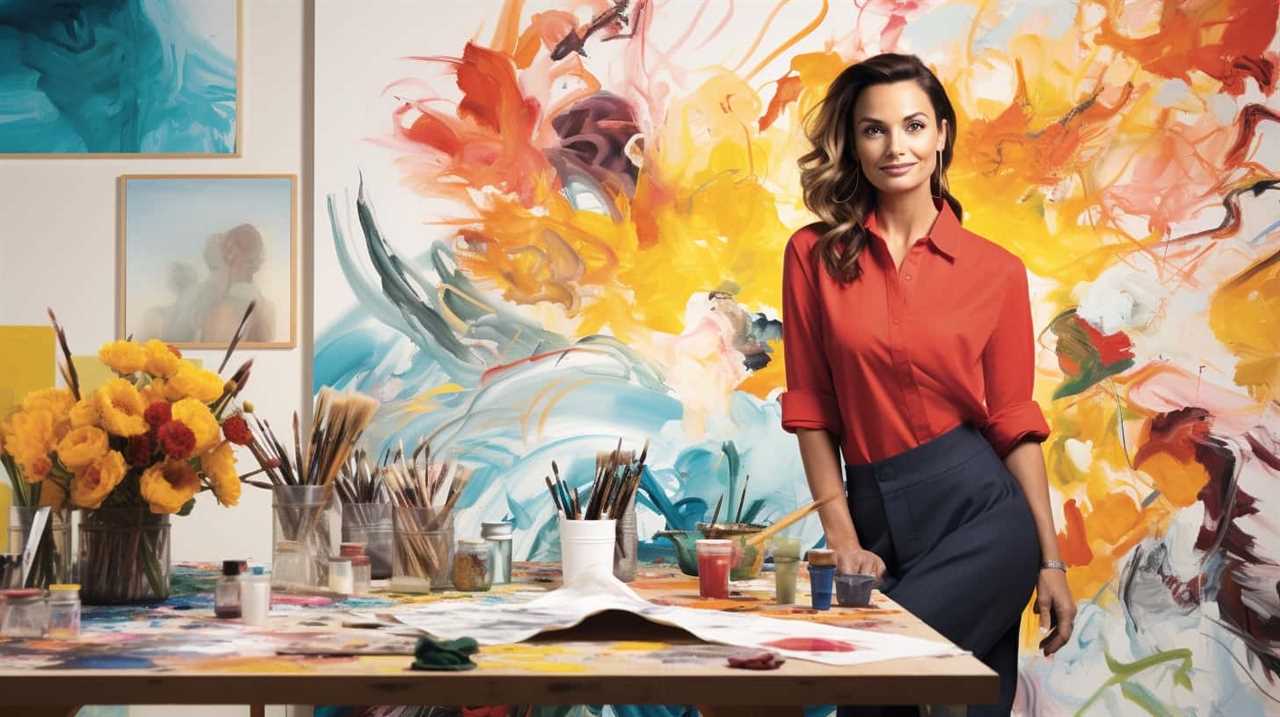
Through their art, artists can challenge dominant narratives, question power structures, and offer alternative perspectives. They can expose the contradictions and hypocrisies within political ideologies, shedding light on the realities that often go unnoticed. By presenting a different lens through which to view society, art can inspire critical thinking and encourage individuals to question the world around them.
The intersection of politics and art is a dynamic and ever-evolving space. It provides a platform for marginalized voices, giving them a means to challenge the status quo and demand social change. By engaging with politics in art, society can expand its understanding of important issues and work towards a more inclusive and equitable future. Artistic activism has the power to transform society’s canvas, shaping a world that reflects the values of liberation and justice.
Art and Social Change
Art critics analyze how art can catalyze social change and influence the collective consciousness. Art has always been intertwined with activism, serving as a powerful tool for social change. Here are four ways in which art can ignite societal transformation:
- Art as a platform for marginalized voices: Through their creations, artists can shine a light on the issues faced by marginalized communities, giving them a voice and empowering them to demand change. Art becomes a powerful tool for the expression of their experiences, struggles, and aspirations.
- Art as a catalyst for dialogue: Art has the unique ability to provoke conversations and challenge societal norms. It can challenge the status quo, spark debates, and encourage critical thinking. By engaging viewers in dialogue, art can break down barriers and foster understanding.
- Art as a form of protest: Artists have long used their work to protest against social injustices. Whether through visual arts, music, or performance, art provides a platform to address systemic issues and call for action. It allows artists to confront and challenge the oppressive structures that perpetuate inequality.
- Art as a source of inspiration: Art has the power to inspire and motivate individuals to become agents of change. It can evoke emotions, ignite empathy, and encourage people to take action. By tapping into the collective consciousness, art can inspire individuals to advocate for social justice and work towards a more equitable society.
Through art and activism, artists have the ability to challenge societal norms, amplify marginalized voices, and inspire social change. In a world where liberation is sought, art serves as a powerful tool to reshape society’s canvas.
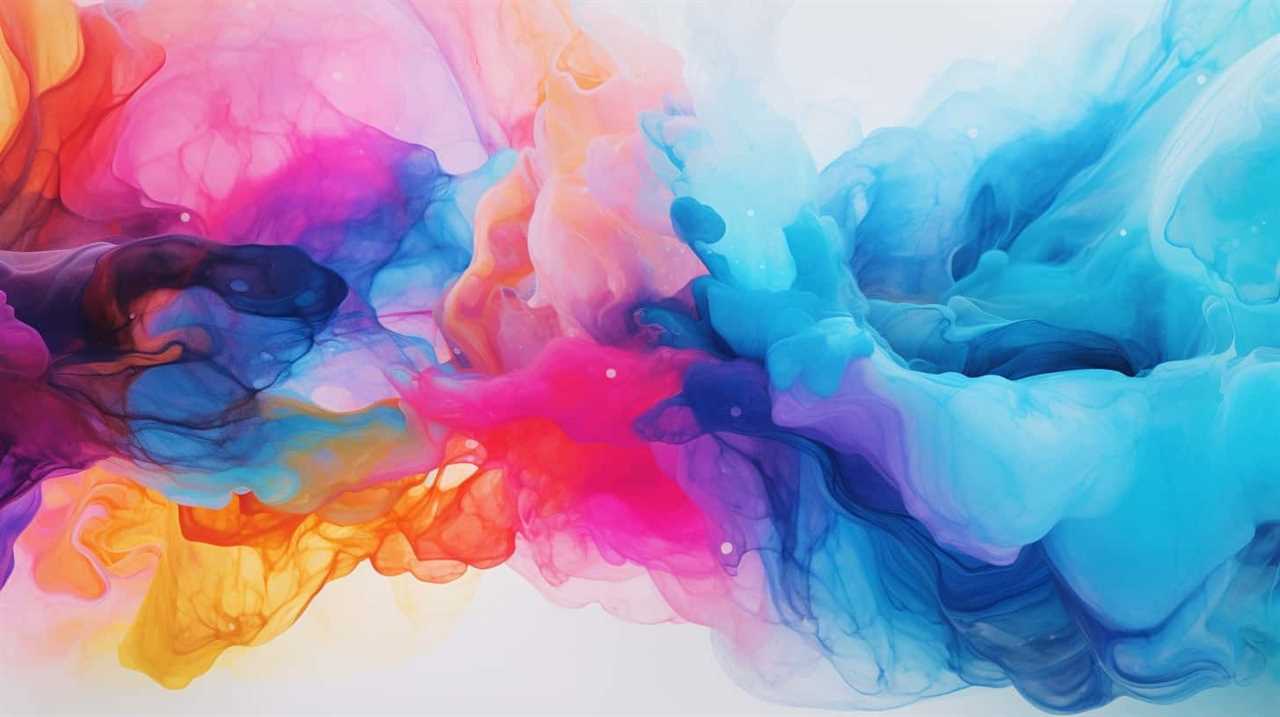
Art’s Response to Contemporary Issues
As critics, we explore how art engages with and responds to the pressing issues of contemporary society. One of the ways in which art manifests this response is through artistic activism, where artists use their creative practices to advocate for social and political change. Artistic activism has gained significant traction in recent years, as more artists recognize the power of their work to raise awareness and incite action. By addressing pressing issues such as inequality, discrimination, and climate change, artists are able to spark conversations and inspire individuals to take a stand.
Art and environmental issues have become increasingly intertwined, with artists using their work to highlight the urgent need for environmental conservation and sustainability. Through various mediums such as painting, sculpture, and installation art, artists are able to depict the beauty of nature, as well as the devastating consequences of human activity. They challenge the viewer to confront their own role in the destruction of the environment and encourage them to take steps towards positive change.
To demonstrate the impact of art in addressing contemporary issues, we have compiled a table showcasing notable artworks that engage with artistic activism and environmental concerns:
| Artwork | Artist | Issue |
|---|---|---|
| "The Water Will Come" | Olafur Eliasson | Climate change |
| "Guerilla Girls" | Guerrilla Girls | Gender inequality |
| "I Wish to Say" | Sheryl Oring | Freedom of speech |
| "The Salt Project" | Motoi Yamamoto | Water scarcity |
| "Plastic Ocean" | Benjamin Von Wong | Plastic pollution |
These artworks serve as powerful reminders of the role art plays in addressing contemporary issues and inspiring social change. Through their creativity, artists are able to transcend boundaries and open up new possibilities for liberation and progress.
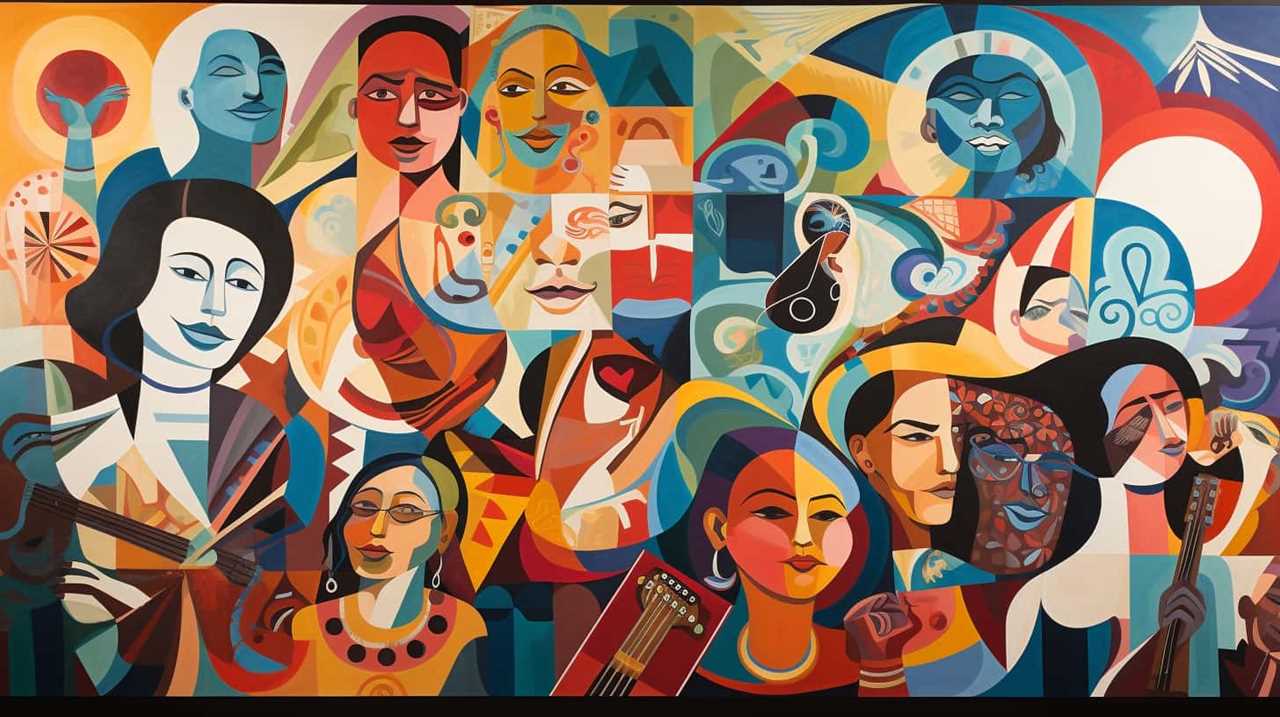
Art as a Catalyst for Dialogue
Exploring the intersection of art and society, we delve into how art serves as a catalyst for dialogue on pressing contemporary issues. Art has long been recognized as a powerful tool for social change, capable of challenging the status quo and igniting conversations that lead to collective action.
Here are four ways in which art acts as a medium for protest and activism:
- Expression of Dissent: Art provides a platform for individuals and communities to express their dissent and frustration towards societal injustices. Through visual metaphors, provocative imagery, and thought-provoking installations, artists can convey powerful messages that resonate with audiences and spark conversations.
- Amplifying Marginalized Voices: Art has the ability to amplify the voices of marginalized communities, often silenced by the dominant discourse. By portraying their experiences, struggles, and dreams, artists shed light on the systemic issues that perpetuate inequality and inspire empathy and understanding.
- Shifting Perspectives: Art has the potential to challenge societal norms and provoke critical thinking. By presenting alternative narratives and challenging dominant ideologies, art invites viewers to question their assumptions and reconsider their perspectives on complex issues.
- Building Solidarity: Art brings people together, fostering a sense of community and solidarity. Through collaborative projects, public installations, and performances, artists create spaces for dialogue, collaboration, and collective action, encouraging individuals to come together and work towards social change.
Artistic Perspectives on Social Injustice
From time to time, we come across powerful artistic perspectives that shed light on the pervasive social injustices plaguing our society. These perspectives, often expressed through various forms of art, serve as a catalyst for change and challenge the status quo.
Artistic activism, for instance, uses creative expression to bring attention to social and political issues, aiming to inspire action and promote social justice. Through their work, artists are able to communicate the struggles faced by marginalized communities, giving a voice to those who’ve been silenced.
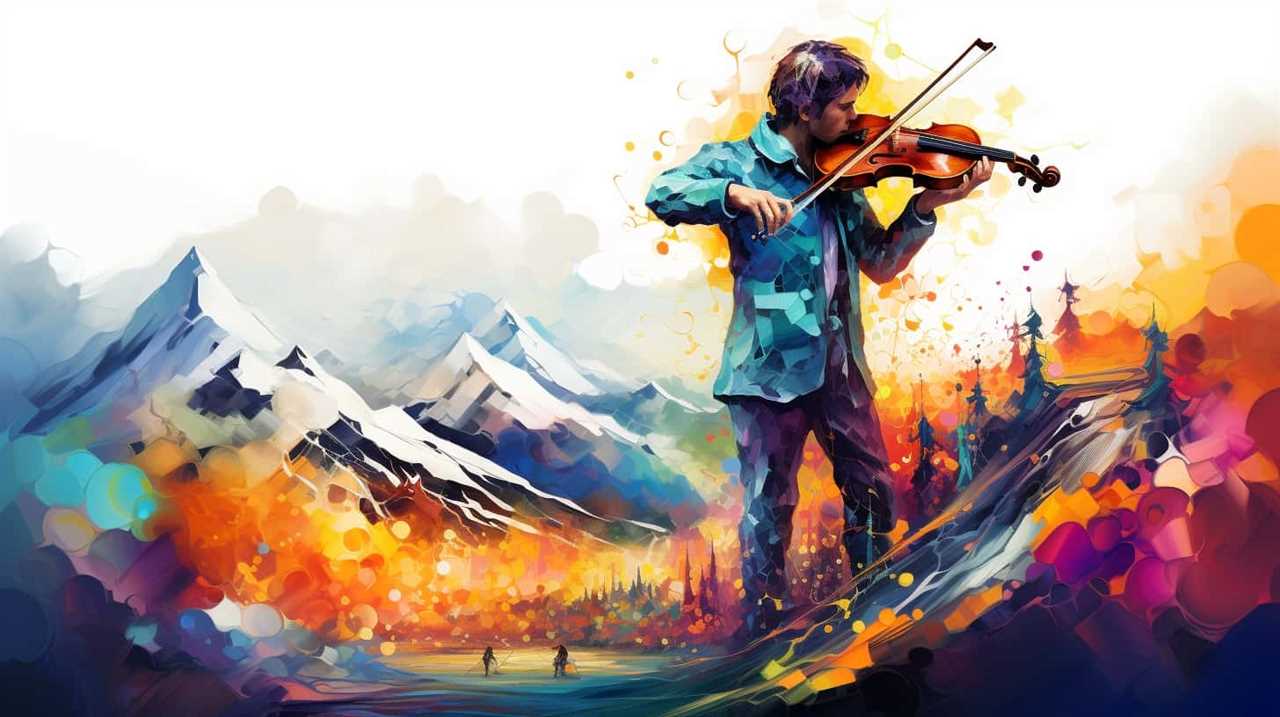
Artistic activism goes beyond traditional forms of protest, utilizing the power of art to engage and provoke emotions in viewers. It serves as a medium for expressing the anger, frustration, and hope of those affected by social injustice. Artistic activism not only raises awareness but also mobilizes individuals to actively participate in creating a more just and equitable society.
Additionally, art therapy plays a crucial role in addressing social injustice. By providing a safe space for individuals to express their emotions and experiences, art therapy enables healing and personal growth. It allows individuals to process and make sense of their experiences, and empowers them to reclaim their narratives. Art therapy can be particularly powerful for marginalized communities who’ve historically been denied a platform to share their stories.
Challenging Norms Through Artistic Expression
When it comes to challenging norms through artistic expression, artists have the power to break societal boundaries and provoke thought.
Through their work, they can serve as social commentators, addressing issues and injustices that may be overlooked or ignored.
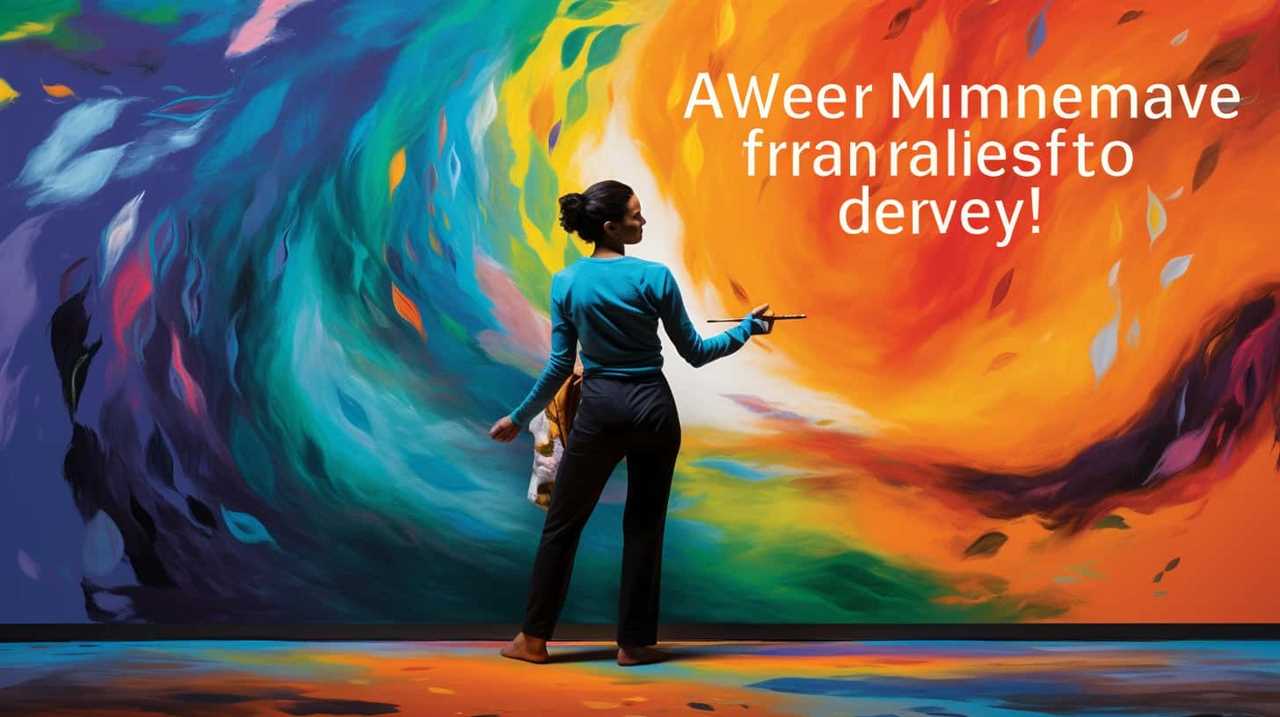
Breaking Societal Boundaries
As art critics, we recognize the power of breaking societal boundaries by challenging norms through artistic expression. Art has the ability to push the limits, provoke thought, and inspire societal transformation. Here are four ways in which artists have successfully broken boundaries:
- Fearless exploration: Artists fearlessly explore unconventional ideas, themes, and subject matter, pushing the boundaries of what’s considered acceptable or mainstream.
- Cultural commentary: Artists use their work to critique and challenge societal norms, shedding light on social issues and sparking conversations that lead to change.
- Embracing diversity: Art breaks societal boundaries by embracing diversity and celebrating the uniqueness of different cultures, races, genders, and sexual orientations.
- Redefining beauty: Artists challenge traditional standards of beauty, promoting inclusivity and redefining what’s considered beautiful in society.
Through their artistic expression, artists have the power to challenge societal norms, break boundaries, and pave the way for societal transformation.
Art critics see art as a powerful tool for challenging societal norms and provoking thought through artistic expression. Artists have long used their work to provide artistic interpretations of the world around them, often offering social commentary through art. By challenging norms and addressing issues such as inequality, injustice, and oppression, artists aim to provoke dialogue and inspire change. Through their creations, artists have the ability to challenge the status quo, question authority, and amplify the voices of marginalized communities. Artistic expression allows for a unique and powerful form of communication that transcends language barriers and reaches deep into the core of human emotions. It is through this lens that art becomes a catalyst for societal transformation.
| Artistic Interpretations | Social Commentary Through Art |
|---|---|
| Visual representations of societal issues | Challenging and questioning the norms |
| Symbolism and metaphors | Amplifying the voices of marginalized communities |
| Satire and irony | Provoking dialogue and inspiring change |
Redefining Cultural Expectations
Through our artistic expression, we aim to challenge cultural expectations and redefine societal norms. Art has the power to break free from the constraints of societal expectations and push the boundaries of what’s considered acceptable. By challenging cultural norms, art can disrupt the status quo and provoke conversations that lead to societal change.

Here are four ways in which artists are redefining cultural norms through their work:
- Subverting gender stereotypes: Artists are using their work to challenge traditional notions of gender, questioning the binary and celebrating diversity and fluidity.
- Addressing social inequalities: Art has become a medium for highlighting social injustices and giving voice to marginalized communities, shedding light on issues that society tends to ignore.
- Questioning beauty standards: Artists are challenging conventional beauty ideals and promoting body positivity, celebrating all body types and challenging narrow definitions of beauty.
- Breaking taboos: Art has the ability to tackle taboo subjects and challenge societal taboos, sparking conversations and promoting understanding and empathy.
Through their creativity and courage, artists are reshaping cultural norms and opening up new possibilities for societal expectations. Art has the power to inspire change and lead us towards a more inclusive and liberated society.
Art’s Influence on Collective Consciousness
Our exploration of art’s impact on collective consciousness reveals the profound effect it has on shaping our shared perspectives. Art has the transformative power to challenge societal norms, provoke critical thinking, and inspire action for societal change. Through artistic expression, artists have the ability to convey powerful messages that resonate with the collective consciousness, ultimately influencing our thoughts, beliefs, and actions.
To better understand this influence, let us consider a table that illustrates the ways in which art can shape collective consciousness:
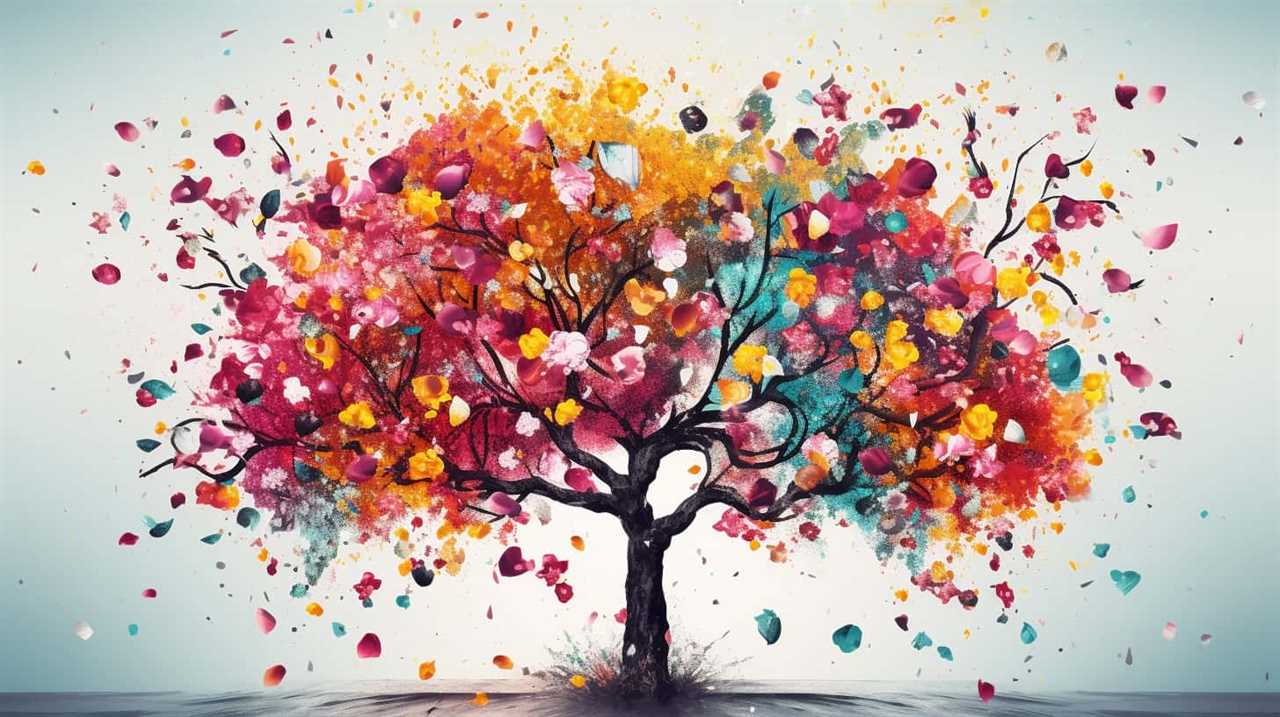
| Artistic Expression | Societal Change | Impact on Collective Consciousness |
|---|---|---|
| Visual Arts | Social justice movements | Raises awareness and empathy towards marginalized communities, prompts conversations on societal inequalities |
| Literature | Feminist movement | Challenges traditional gender roles, empowers women, and promotes gender equality |
| Music | Civil rights movement | Inspires unity, amplifies voices of marginalized groups, and catalyzes social change |
Through the visual arts, artists can shed light on social justice issues, evoking emotions and fostering empathy within the collective consciousness. Literature, on the other hand, has the power to challenge cultural expectations and redefine societal norms, particularly in movements like feminism. Music, with its universal language, has historically played a significant role in driving the civil rights movement, allowing marginalized groups to voice their struggles and aspirations.
The Evolution of Art Criticism in Society
How has the role of art criticism evolved in society? Over the years, art criticism has undergone significant changes, influenced by the evolutionary impact of societal shifts and the historical context in which it exists. Here are four key ways in which art criticism has evolved:
- Embracing diversity: In the past, art criticism often adhered to rigid standards and limited perspectives. However, with the progression of society, there’s been a growing recognition of the importance of diverse voices and experiences in the art world. Art criticism now strives to incorporate a range of perspectives and challenge traditional notions of artistic value.
- Expanding mediums: As technology has advanced, so too has the range of artistic mediums available. Art criticism now encompasses not just traditional forms such as painting and sculpture, but also photography, video art, digital art, and performance art. Critics now engage with these diverse mediums, offering insightful interpretations and analysis.
- Interdisciplinary approach: Art criticism has increasingly moved away from a singular focus on aesthetics and technique. Critics now explore the broader cultural, social, and political implications of artworks. They consider how art intersects with other disciplines such as sociology, psychology, and philosophy, providing a richer understanding of the artist’s intentions and the impact of their work.
- Democratization of criticism: With the advent of social media and online platforms, art criticism has become more accessible to the general public. Individuals can now share their opinions and engage in discussions about art, challenging traditional hierarchies and allowing for a more democratic exchange of ideas. This shift has expanded the scope of art criticism and encouraged a more inclusive dialogue about art in society.
Frequently Asked Questions
How Does Art Criticism Contribute to the Evolution of Art Criticism in Society?
Art criticism contributes to the evolution of criticism by providing insightful analysis and interpretation of artworks. It has a significant impact on artists, as it prompts them to reflect and challenge societal norms, fostering creativity and liberation in the art world.
What Are Some Examples of Contemporary Issues That Artists Have Responded to Through Their Work?
Contemporary issues have spurred artistic responses that resemble brushstrokes on society’s canvas. Artists address themes like climate change, social inequality, and political unrest, using their work to provoke introspection and ignite conversations about our collective challenges.
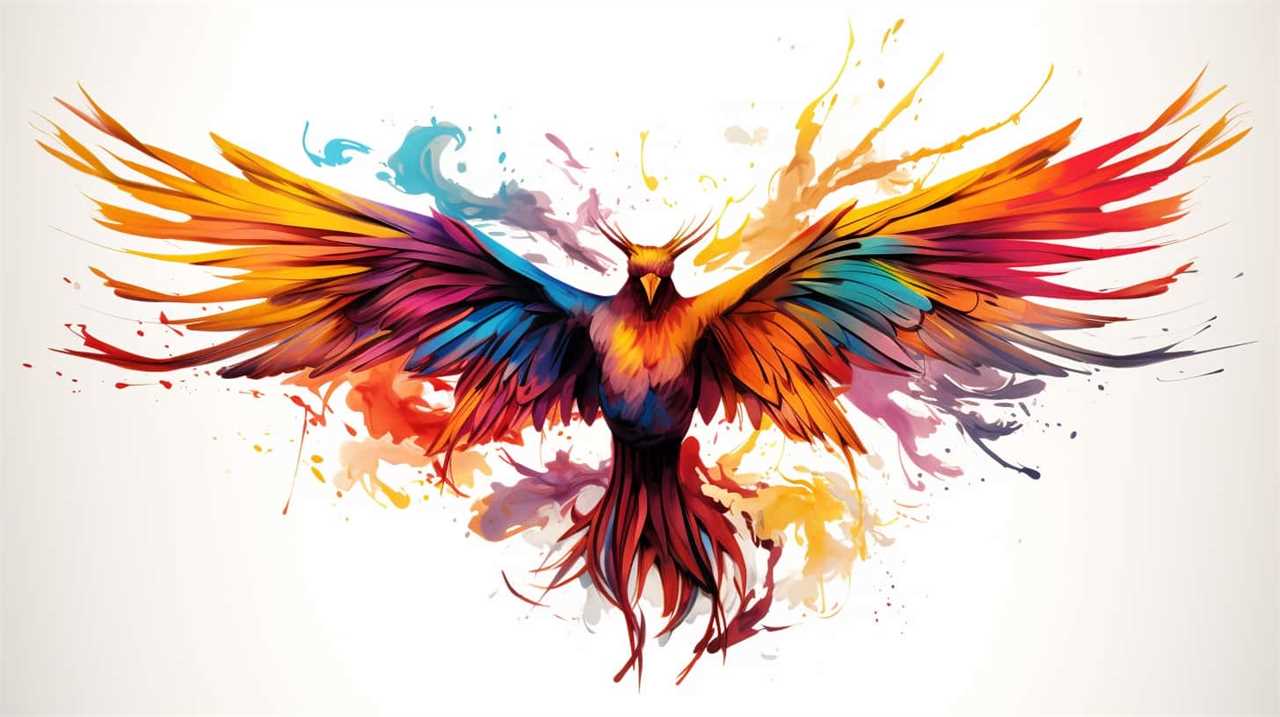
How Does Art Challenge Societal Norms and Conventions Through Artistic Expression?
Artistic rebellion challenges societal norms and conventions by pushing the boundaries of what is accepted and expected. Through artistic expression, artists have the power to liberate and inspire change, provoking thought and fostering a desire for liberation.
Can Art Really Shape Public Opinion and Influence Collective Consciousness?
Art’s influence on public perception is undeniable. Through its thought-provoking and emotive nature, art has the power to challenge existing beliefs and shape collective consciousness, fostering liberation and progressive change.
How Has the Intersection of Politics and Art Evolved Over Time and How Does It Impact the Role of Art in Society?
Over time, the evolution of political art has had a profound impact on societal perceptions. Through nuanced depictions and thought-provoking messages, art has the power to challenge norms, inspire change, and liberate minds.
Do Art Critics and Painters Agree on the Portrayal of Society in Art?
Art critics and painters often have differing perspectives on society’s roles. While art critics may analyze and interpret the portrayal of society in art from a theoretical standpoint, painters provide authentic insights on society’s roles through their creative expressions, resulting in a nuanced and multifaceted dialogue within the art world.
Conclusion
In conclusion, art critics play a crucial role in examining society’s canvas and shedding light on its intricacies. Through their analytical and interpretive approach, they provide insightful commentary on the power of art in reflecting societal issues, shaping public opinion, and challenging norms. As art evolves and society changes, the role of art criticism continues to evolve as well, guiding us towards a deeper understanding of ourselves and our collective consciousness.
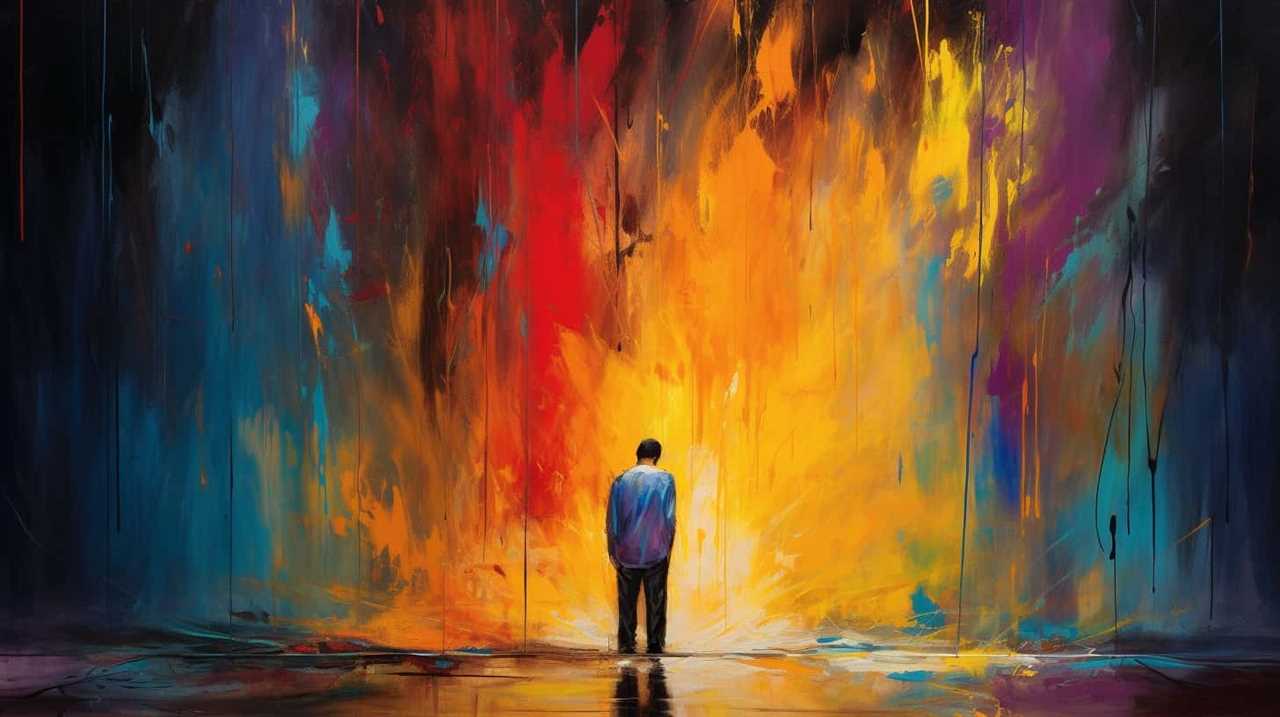
Lauren’s talent in writing is matched by her passion for storytelling. Her love for books and deep understanding of culture and entertainment add a distinct flavor to her work. As our media and press contact, Lauren skillfully bridges the gap between afterQuotes and the broader media landscape, bringing our message to a wider audience.
